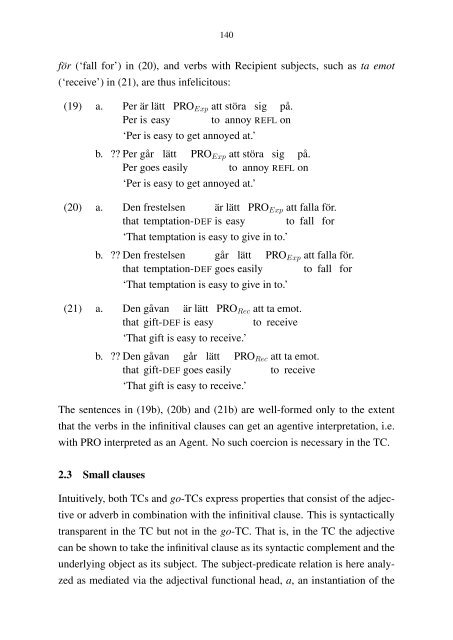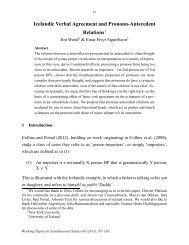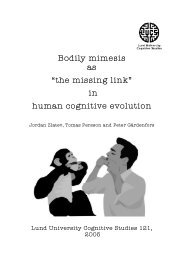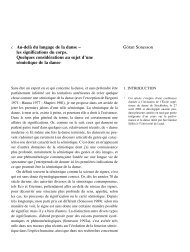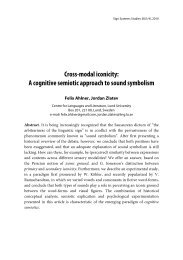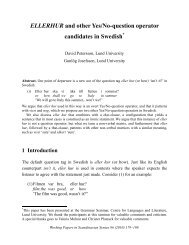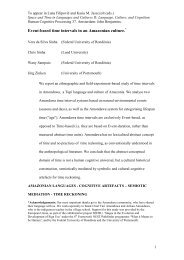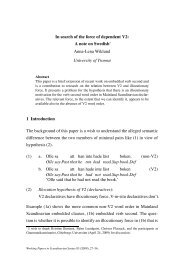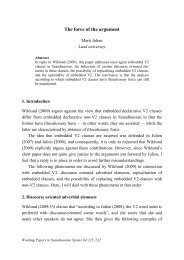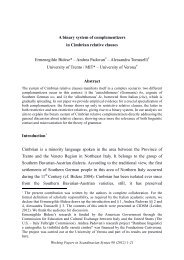Eva Klingvall On non-copula Tough Constructions in Swedish (PDF ...
Eva Klingvall On non-copula Tough Constructions in Swedish (PDF ...
Eva Klingvall On non-copula Tough Constructions in Swedish (PDF ...
Create successful ePaper yourself
Turn your PDF publications into a flip-book with our unique Google optimized e-Paper software.
140för (‘fall for’) <strong>in</strong> (20), and verbs with Recipient subjects, such as ta emot(‘receive’) <strong>in</strong> (21), are thus <strong>in</strong>felicitous:(19) a. Per är lätt PRO Exp att störa sig på.Per is easy to annoy REFL on‘Per is easy to get annoyed at.’b. ?? Per går lätt PRO Exp att störa sig på.Per goes easily to annoy REFL on(20) a. Denthatb. ?? Denthat(21) a. Denthatb. ?? Denthat‘Per is easy to get annoyed at.’frestelsentemptation-DEFärislätt PRO Exp att falla för.easy to fall for‘That temptation is easy to give <strong>in</strong> to.’frestelsentemptation-DEFgår lätt PRO Exp att falla för.goes easily to fall for‘That temptation is easy to give <strong>in</strong> to.’gåvangift-DEFäris‘That gift is easy to receive.’gåvangift-DEFlätt PRO Rec att ta emot.easy to receivegår lätt PRO Rec att ta emot.goes easily to receive‘That gift is easy to receive.’The sentences <strong>in</strong> (19b), (20b) and (21b) are well-formed only to the extentthat the verbs <strong>in</strong> the <strong>in</strong>f<strong>in</strong>itival clauses can get an agentive <strong>in</strong>terpretation, i.e.with PRO <strong>in</strong>terpreted as an Agent. No such coercion is necessary <strong>in</strong> the TC.2.3 Small clausesIntuitively, both TCs and go-TCs express properties that consist of the adjectiveor adverb <strong>in</strong> comb<strong>in</strong>ation with the <strong>in</strong>f<strong>in</strong>itival clause. This is syntacticallytransparent <strong>in</strong> the TC but not <strong>in</strong> the go-TC. That is, <strong>in</strong> the TC the adjectivecan be shown to take the <strong>in</strong>f<strong>in</strong>itival clause as its syntactic complement and theunderly<strong>in</strong>g object as its subject. The subject-predicate relation is here analyzedas mediated via the adjectival functional head, a, an <strong>in</strong>stantiation of the


